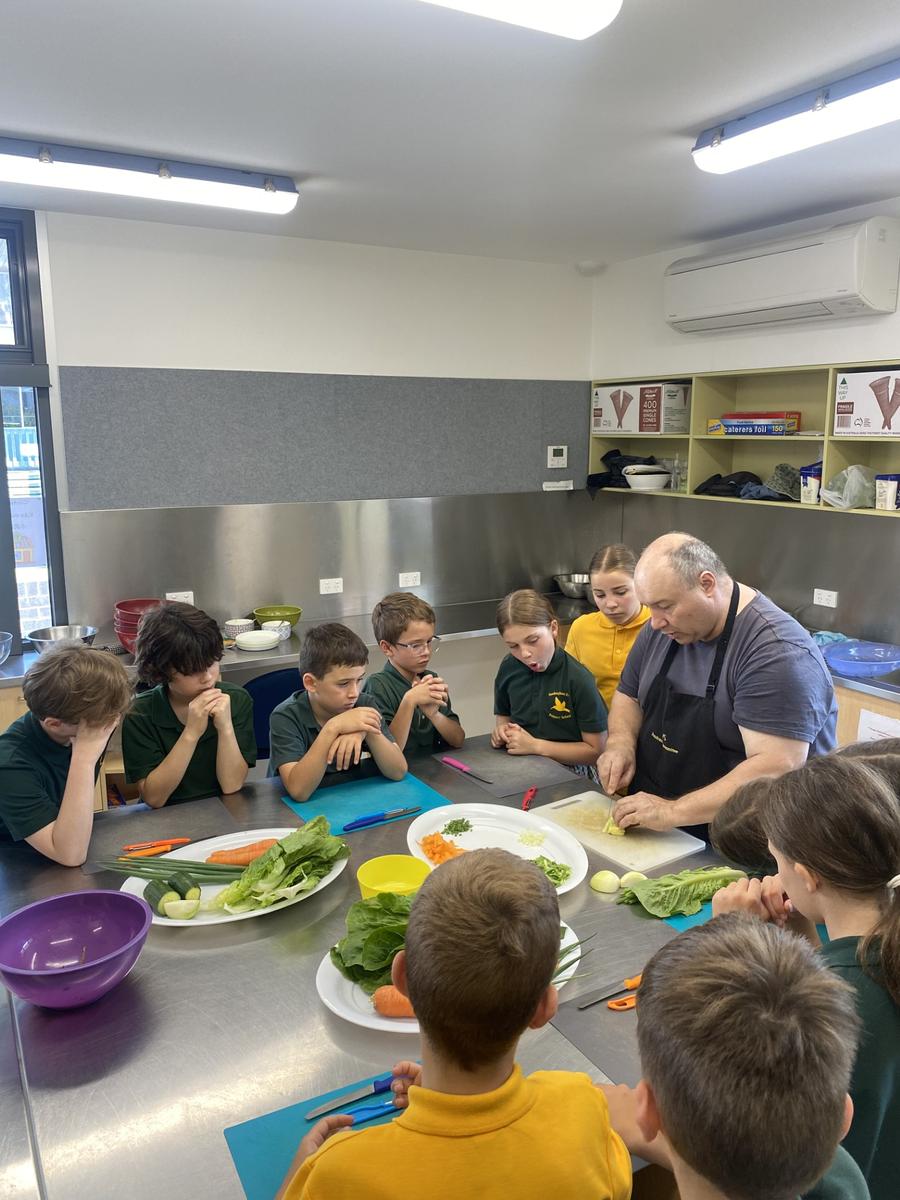Level 4: Connect

Level 4 2025
Lisa Fennessy & Isabella Nocera 4A
Tilly Van & Marc Restaino 4B
Michelle Stainforth 4C
General Reminders
Please remind students to bring the following to school each day.
- Hats are required to be worn outside during recess and lunch.
- Diaries - these are our direct form of communication, alternatively you can email you child's teacher through the office.
- Fully Charged Laptops everyday.
Diary Dates:
- Mar 10th Labour Day ** ( No School)
Cooking and Gardening:
During weeks 5,6, and 7, the Level 4 students have had the opportunity to engage in the cooking and gardening sessions with Mr Marco. For two hours, one class joins Marco in the kitchen, and these weeks we were lucky to enjoy some fresh made rice paper rolls! 4A got to enjoy this treat last week, with 4B getting in the kitchen this week and 4C ready to show off their culinary skills next week. The students also get to join Marco for some time in the SEPS garden the following day.
Inquiry:
The Level 4 students have been busily exploring how health related advertisements and media is all around us. While discussing the importance of seeking professional health information from trusted sources, students had a go at creating their own heath advertisement posters, choosing an area of wellbeing in which they wanted to promote such as sun safety or staying active.
During our lessons this week, we unpacked the importance of accessing natural and human-built spaces that help promote us staying active and supporting all elements of our health and wellbeing. Students discussed the benefits of team sports and games, and began creating their own games and activities that can promote our social, emotional, and physical health.
Moving into Weeks 7&8, we will be exploring how our health related choices impact our lives daily, and the benefits we can provide to ourselves by being in control of these decisions that support out brain and body.
Inquiry Based Video: Kid friendly yoga
Please follow the link and enjoy a 12 minute yoga to stretch your body and focus your mind! Enjoy .
https://www.youtube.com/watch?v=ZK2XBduF84I
Literacy:
In Level 4, we are learning how to make our narrative writing exciting, just like real authors do. We will continue to look into how writers use strong beginnings, interesting characters, and descriptive language to bring stories to life. By looking at what authors do, we are learning to add suspense, dialogue, and powerful word choices to make our own stories more engaging. Students will be practising these skills through shared writing, group activities, and their own creative stories.
As we move into the next two weeks, our literacy lessons will explore the reading comprehension strategies of making connections and analysing the main ideas of a text. When we practice making connections, it allows us to put together our prior knowledge with what we are currently reading. Finding the main ideas not only develops our comprehension in unpacking the purpose of a text, but we can also decipher between what is interesting and what is important. Both these strategies encourage a deeper understanding of a text.
Core Literacy:
In Literacy, we have been reviewing plurals the past couple of weeks. Our newest concept we are learning about 'ar vs a' in words like harp and calm, where if the a is followed by 2 consonants is makes an /ar/ sound. In Morphology, the prefixes/suffixes we are learning in weeks 7 & 8 are: un-, re-, mid-, mis-, in/im-, ex-. Please take a look at our Morphology routine video below:
Numeracy:
In Maths, we’ve been building our confidence with place value, exploring how the value of a digit changes depending on its position in a number. We’ve also been diving into our base-10 system and discovering how multiplying or dividing by 10, 100, or 1,000 shifts numbers within this structure.
One of the most exciting parts has been putting our learning into action by converting measurements of length! Students have been exploring real-world examples, making connections between millimetres, centimetres, metres, and kilometres. It’s been great to see them apply their knowledge in practical ways.
You can support this learning at home by chatting about measurements in everyday life—whether it’s estimating how far you’ve walked, checking the height of a bookshelf, or even discussing how road signs show distances. These little moments help reinforce the big ideas we’re exploring in class!

